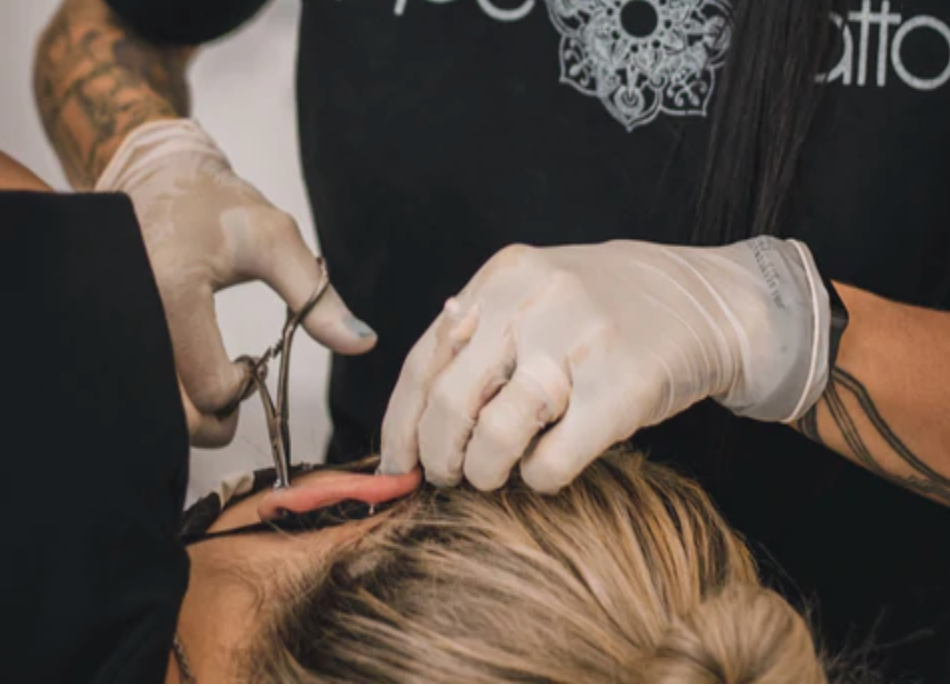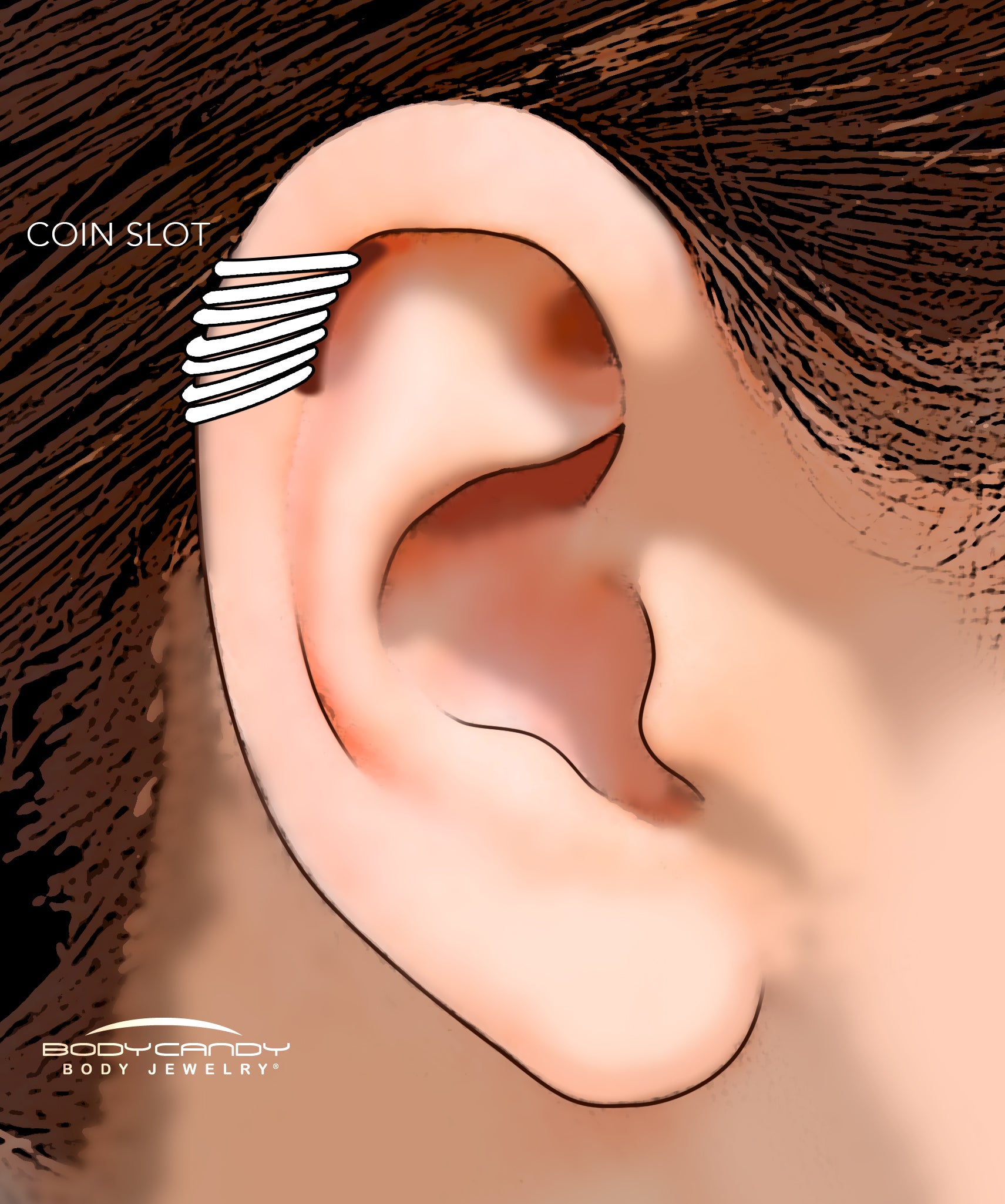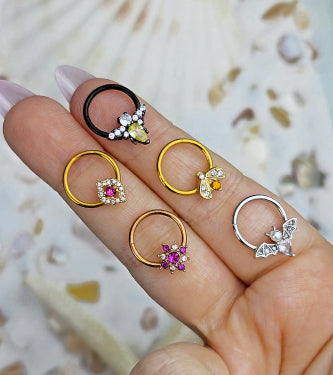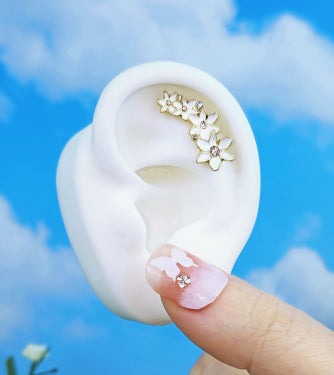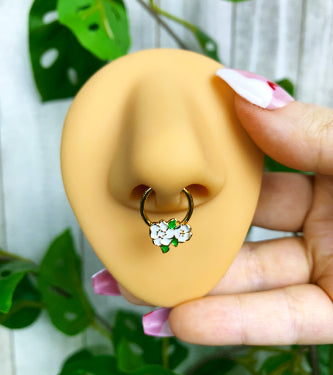Have you ever wondered what a dermal piercing is or how they work? Maybe you saw someone with the hollow of their neck pierced or their chest. If you are interested in getting a more unconventional piercing or want a little more information on what they are, keep reading for a quick explanation of dermal piercings.

What is a dermal piercing?
Dermal piercings, or single-point piercings, are piercings that sit flat on the surface of the skin with an entry point under the skin but no exit point. Because the jewelry doesn’t exit the body it is easier to pierce flat parts of the body that don’t accommodate double-point piercing.
To hold dermal jewelry in place the piercer inserts an anchor into the skin that is fastened by the visible part of the body jewelry like a gem or charm.
Where can you get a dermal piercing?
One of the best things about dermal piercings is that they can be done on almost any flat area of the body for a unique pierced look. Some locations for dermal piercings include:
- the nape of the neck
- back dimples
- cheekbones
- chest
- lower back
- abdomen
- thighs
It is important to consider whether your dermal piercing will snag on clothes or encounter other obstructions that might cause the piercing to get infected, migrate, or even reject.
How is a dermal piercing performed?
Like any other piercing, your experience will start with the area of your piercing being cleaned and prepped for the task at hand. Once the area has been disinfected your piercer will mark the location and then quickly puncture the skin with a needle or skin punch to create the pocket where the dermal anchor will sit. Then the anchor of the jewelry is inserted and set in the pocket of skin and the jewelry top is secured. The whole process should only take a few minutes to complete.

How do you switch out your jewelry?
In general, it takes about three months for a dermal piercing to heal. Once this happens, you can change the visible, external top of your dermal jewelry. Many people prefer to have their piercer change out their jewelry for them. Don’t hesitate to do so if you’re unsure about the process! If you do want to change your own jewelry, make sure to:
- Wash your hands with antibacterial soap before you touch the area or the jewelry
- Clean the area with saline solution
- Dry the area gently
- Gently untwist the top of your jewelry in a counterclockwise direction (if the jewelry won’t twist off easily you may need to see your piercer)
- Screw on the new jewelry top by inserting it and turning it clockwise until it is secure
- Clean the area again and dry gently
When you take the proper steps to care for and maintain your dermal piercing you can keep this unique, eye-catching piercing for years. Remember, if you have any questions about placement or care it’s always best to contact a trusted piercer for the best information!


